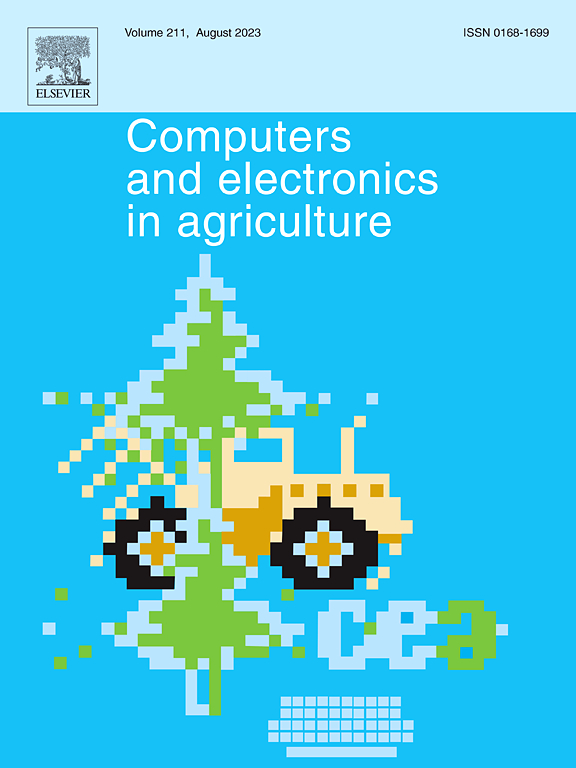Dense object detection based canopy characteristics encoding for precise spraying in peach orchards
IF 7.7
1区 农林科学
Q1 AGRICULTURE, MULTIDISCIPLINARY
引用次数: 0
Abstract
Accurate and precise spraying in orchards is paramount for optimized agricultural practices, ensuring efficient pesticide utilization, minimized environmental impact, and enhanced crop yield by targeting specific areas with the right amount of treatment. The asymmetrical distribution of foliage and flowers in peach orchards poses a formidable challenge to achieving precise spray accuracy, impeding the uniform application of treatments and compromising the overall efficacy of pest and disease control measures. In response to the prevailing challenges in achieving accurate spray application caused by the asymmetrical distribution of foliage and flowers in peach orchards, this paper introduces a novel deep neural network to map the RGB image and corresponding depth to the density map of peach flowers or foliage. The model consists of components: (1) two backbones based on ResNet-50 that extract contextual features from the RGB image and depth features from depth data at multiple scales and levels; (2) an optimized depth-enhanced module that effectively fuses the distinct features extracted from the two input streams; and (3) a two-stage decoder that aggregates the high-level cross-modal features to regress the coarse density map and subsequently integrates it with the low-level cross-modal features for final density map prediction. To evaluate the performance of our model, we collected 493 frames (206,095 instances) of peach flowers and 475 frames (350,833 instances) of foliage from the peach orchards utilizing our sprayer prototype equipped with stereo cameras. The proposed method outperforms state-of-the-art models on our datasets, demonstrating the superiority and efficacy for encoding canopy characteristics in the form of flower and foliage density maps for blossom and cover sprays. It attains significant computational efficiency, exhibiting a frame rate of 20 FPS, and showcases exceptional accuracy with a WMAPE of 12.11% for peach flowers and a WMAPE of 13.37% for leaves.
求助全文
约1分钟内获得全文
求助全文
来源期刊

Computers and Electronics in Agriculture
工程技术-计算机:跨学科应用
CiteScore
15.30
自引率
14.50%
发文量
800
审稿时长
62 days
期刊介绍:
Computers and Electronics in Agriculture provides international coverage of advancements in computer hardware, software, electronic instrumentation, and control systems applied to agricultural challenges. Encompassing agronomy, horticulture, forestry, aquaculture, and animal farming, the journal publishes original papers, reviews, and applications notes. It explores the use of computers and electronics in plant or animal agricultural production, covering topics like agricultural soils, water, pests, controlled environments, and waste. The scope extends to on-farm post-harvest operations and relevant technologies, including artificial intelligence, sensors, machine vision, robotics, networking, and simulation modeling. Its companion journal, Smart Agricultural Technology, continues the focus on smart applications in production agriculture.
 求助内容:
求助内容: 应助结果提醒方式:
应助结果提醒方式:


